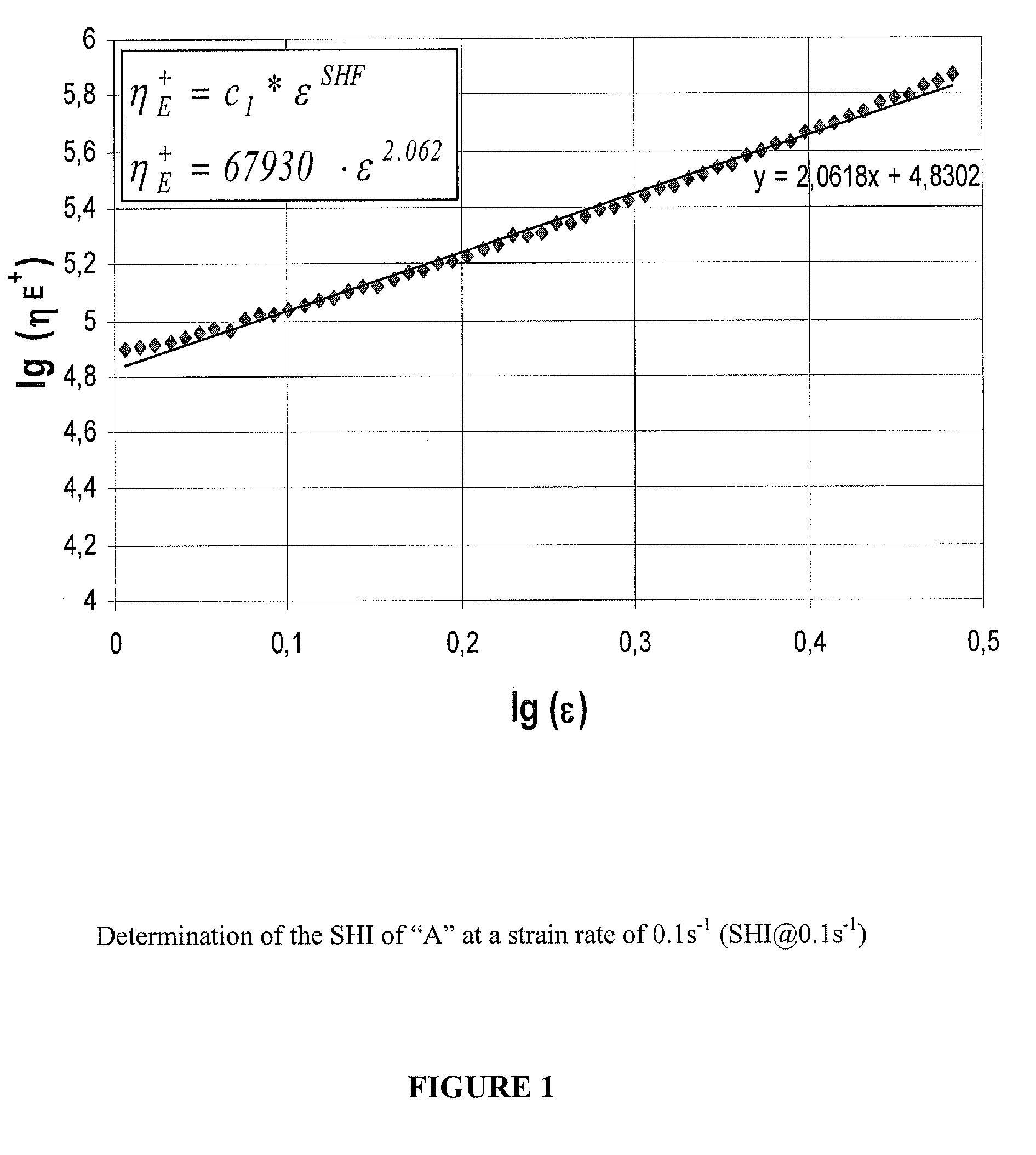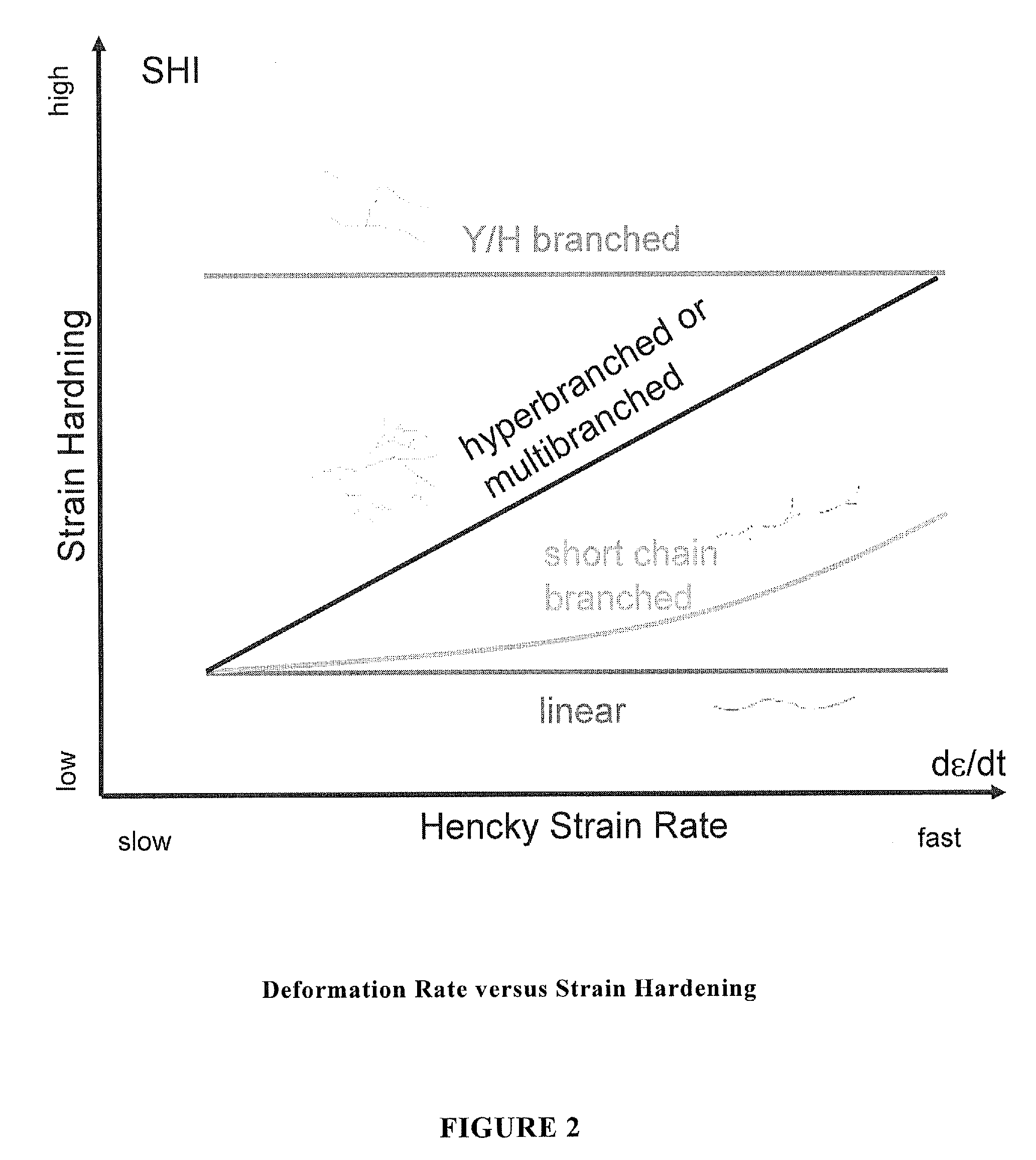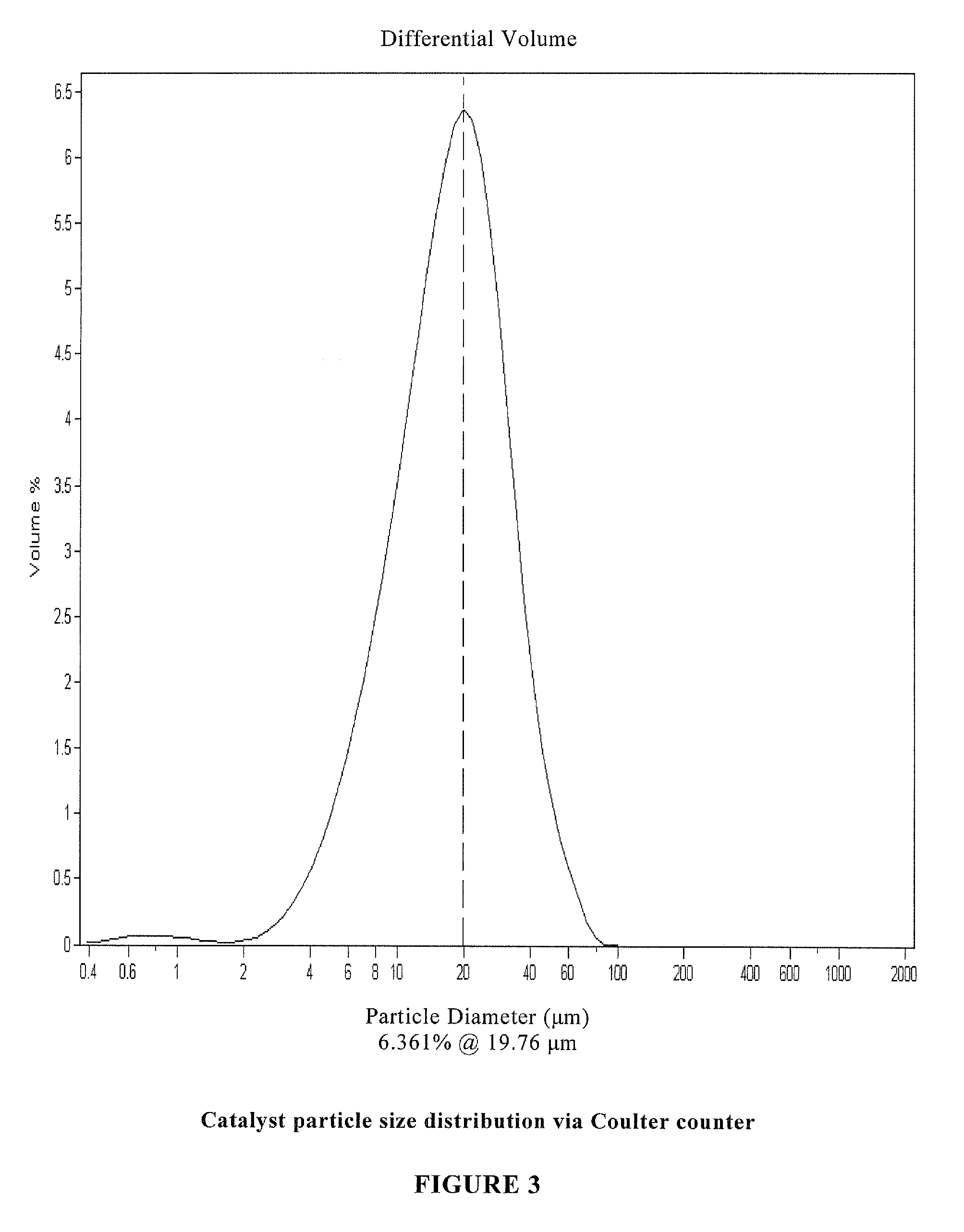Biaxially oriented polypropylene film
a polypropylene film, biaxial orientation technology, applied in the direction etc., can solve the problems that the improvement of processability should not be achieved at the expense of mechanical and/or thermal properties of the final film, and achieve the balance between mechanical and thermal properties and processing properties, and achieve high stiffness and thermal resistance. , the effect of improving the balan
- Summary
- Abstract
- Description
- Claims
- Application Information
AI Technical Summary
Benefits of technology
Problems solved by technology
Method used
Image
Examples
##ventive example 1
Inventive Example 1
I 1
Catalyst Preparation
[0254]The catalyst was prepared as described in example 5 of WO 03 / 051934, with the Al- and Zr-ratios as given in said example (Al / Zr=250).
Catalyst Characteristics:
[0255]Al- and Zr-content were analyzed via above mentioned method to 36.27 wt.-% Al and 0.42%-wt. Zr. The average particle diameter (analyzed via Coulter counter) is 20 μm and particle size distribution is shown in FIG. 3.
[0256]A 5 liter stainless steel reactor was used for propylene polymerizations. 1100 g of liquid propylene (Borealis polymerization grade) was fed to reactor. 0.2 ml triethylaluminum (100%, purchased from Crompton) was fed as a scavenger and 15 mmol hydrogen (quality 6.0, supplied by Aga) as chain transfer agent. Reactor temperature was set to 30° C. 29.1 mg catalyst were flushed into to the reactor with nitrogen overpressure. The reactor was heated up to 70° C. in a period of about 14 minutes. Polymerization was continued for 50 minutes at 70° C., ...
##ventive example 2
Inventive Example 2
I 2
[0258]A catalyst as used in I1 has been used.
[0259]A 5 liter stainless steel reactor was used for propylene polymerizations. 1100 g of liquid propylene (Borealis polymerization grade) was fed to reactor. 0.5 ml triethylaluminum (100%, purchased from Crompton) was fed as a scavenger and 50 mmol hydrogen (quality 6.0, supplied by Åga) as chain transfer agent. Reactor temperature was set to 30° C. 19.9 mg catalyst were flushed into to the reactor with nitrogen overpressure. The reactor was heated up to 70° C. in a period of about 14 minutes. Polymerization was continued for 40 minutes at 70° C., then propylene was flushed out, the reactor pressure was increased to 20 bars by feeding (gaseous-) propylene. Polymerization continued in gas-phase for 273 minutes, then the reactor was flashed, the polymer was dried and weighted.
[0260]Polymer yield was weighted to 871 g, that equals a productivity of 44 kgPP / gcatalyst. 1000 ppm of a commercial stabilizer Irganox B 215 (F...
##ventive example 3
Inventive Example 3
I 3
[0261]50 wt % I3a have been mixed with 50 wt % I3b before compounding and pelletizing to obtain a bimodal polypropylene from melt blending with a Prism TSE16 lab kneader at 250 rpm at a temperature of 220-230° C.
Polymerisation Procedure I3a:
[0262]The same catalyst as in example I1 has been used.
[0263]A 20 liter stainless steel reactor was used for propylene polymerization. 1000 g of liquid propylene (Borealis polymerization grade) was fed to reactor. 0.4 ml triethylaluminum (100% (purchased from Crompton), added as 1 molar solution in hexane)) was fed as a scavenger and 60 mmol hydrogen (quality 6.0, supplied by Aga) as chain transfer agent using propylene as spilling agent (250 resp. 500 g). Reactor temperature was set to 13° C. 73.4 mg catalyst was flushed into to the reactor with 250 g liquid propylene. The catalyst was prepolymerized for 10 min. Then the reactor was heated up to 70° C. in a period of about 15 minutes adding additional 2470 g propylene. Poly...
PUM
| Property | Measurement | Unit |
|---|---|---|
| temperature | aaaaa | aaaaa |
| molecular weight distribution | aaaaa | aaaaa |
| molecular weight distribution | aaaaa | aaaaa |
Abstract
Description
Claims
Application Information
 Login to View More
Login to View More - R&D
- Intellectual Property
- Life Sciences
- Materials
- Tech Scout
- Unparalleled Data Quality
- Higher Quality Content
- 60% Fewer Hallucinations
Browse by: Latest US Patents, China's latest patents, Technical Efficacy Thesaurus, Application Domain, Technology Topic, Popular Technical Reports.
© 2025 PatSnap. All rights reserved.Legal|Privacy policy|Modern Slavery Act Transparency Statement|Sitemap|About US| Contact US: help@patsnap.com



